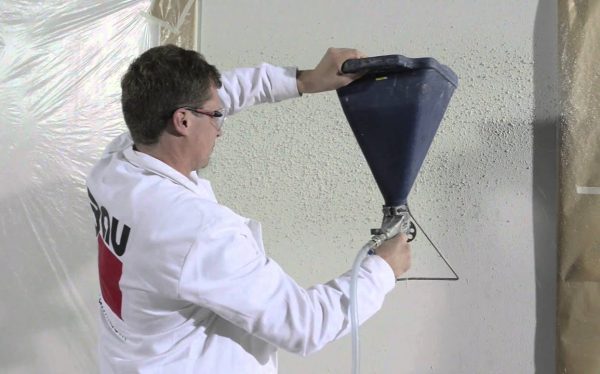During construction and repairs, walls and ceilings often have to be plastered. This process is rather laborious, therefore various devices and tools were created to facilitate the tasks of the wizard.
- Purpose and principle of operation of the cartouche gun
- Hopper bucket
- Cartouche gun
- The design and characteristics of the cartridge gun
- Material
- Dimensions and Weight
- Nozzle sizes and their purpose
- Necessary pressure and speed
- Types of cartouche guns and their price
- Which device to choose
- Instruction for use
- The density of the solution
- Cartridge Gun Manufacturers
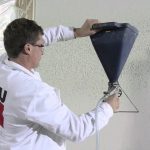
A cartouche gun is one of such devices, it is the closest "relative" to the airbrush and is perfect for applying different types of plaster.
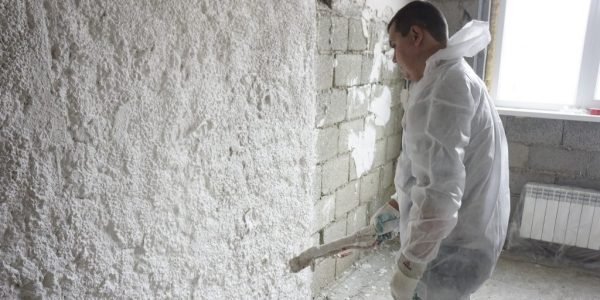
Purpose and principle of operation of the cartouche gun
A cartouche gun is understood to mean a pneumatic tool with which putty, plaster and other construction mixtures are applied. The gun is often used by professional finishers at the stage of applying the starting plaster and during finishing work. The productivity of mechanized labor is much higher than with manual plastering of surfaces, since the speed is higher and the labor intensity less. On average, with a gun, you can process up to 100 square meters of area during the day by performing a layer up to 1-3 cm thick.
Cartridge gun is ideal for applying:
- dense types of paint and other paints and varnishes with high viscosity;
- decorative types of plaster - multicolor, mosaic, Venetian;
- facade plaster;
- liquid wallpaper and silk plaster;
- liquid plugs;
- marble coatings;
- some types of primer.
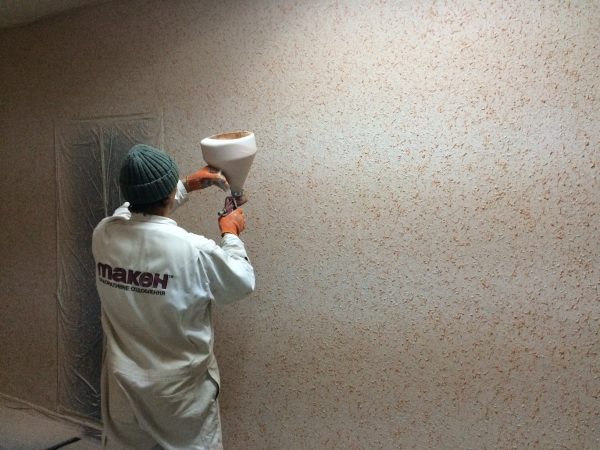
During operation, the cartouche gun under pressure ejects the finished mortar from the nozzle. This is made possible by connecting a compressor with certain technical characteristics. The main elements of the product are:
- steel barrel;
- nozzle;
- capacity for solution from 3 liters;
- trigger handle;
- nozzle with nozzle (suction tube);
- purge ramrod to clean clogged holes.
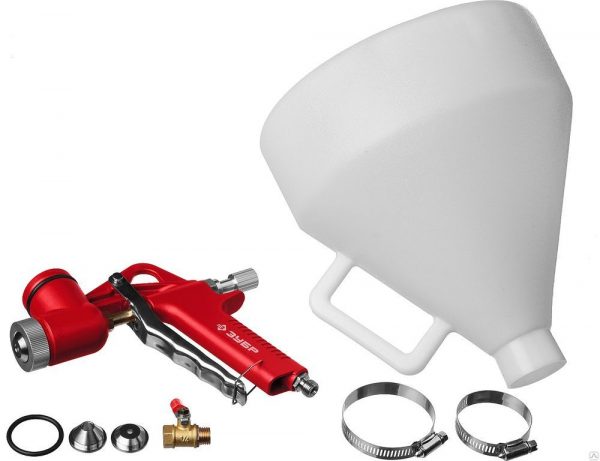
Most cartouche guns for plastering are sold complete with a set of nozzles, which vary depending on the type and density of the mortar. Thick, pasty formulations are applied using a diffuser nozzle with a bell angle of 30-45 degrees. For liquid solutions, a nozzle with an angle of 15-20 degrees is placed, which does not allow the solution to drain from the base.
to contents ↑Hopper bucket
Such a device is considered an analogue of a cartouche gun and has another name - a pneumatic bucket. It also joins the compressor, but the pressure arising in its capacity will be lower, since compressed air is absent in the nozzle. The hopper bucket is equipped with a bucket capacity with several holes from below, through which the plaster is applied to the walls or ceiling. Most buckets are sold without a compressor and support the possibility of applying only thick solution.
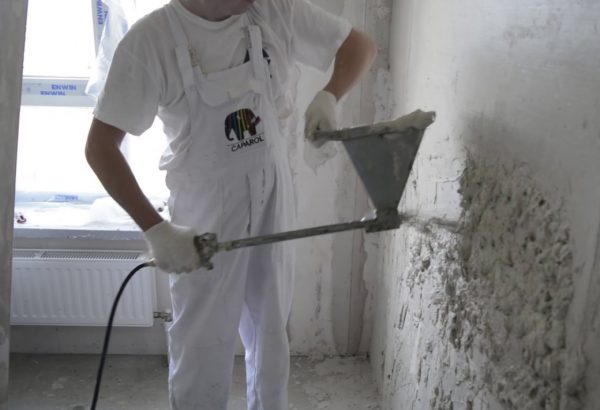
Cartouche gun
The main difference between a gun and a hopper bucket is that in the latter, the solution enters a separate container with several holes. In addition, the spray area of the gun depends on the angle at which the air mass will flow to the solution, while the angle on the hopper bucket does not matter.
The advantage of a cartouche gun is the absence of loss of working mass, since it is sprayed only when moving along the nozzle. The price of guns is much lower than the cost of hopper buckets. In addition, cartouche devices are suitable for applying texture plasters and creating patterns, while hopper buckets are not.
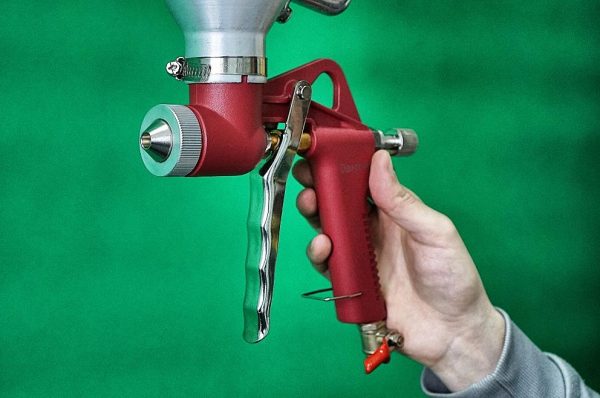
The design and characteristics of the cartridge gun
The pistol body has a corresponding “weapon” shape, due to which the device got its name. It is equipped with a long trigger for three or four fingers, after pressing which opens the air supply. At the bottom of the handle there is a fitting that connects to the high pressure hose and compressor. The suction tube is threaded with a valve that locks the airflow outlet when the hose is disconnected.
The nozzle of the gun is equipped with several interchangeable nozzles - usual and for making ornaments. The role of the solution container here is played by a cone-shaped container attached on top. Many models of guns have a handle on the operator's side - it allows you to use the second hand, if it becomes difficult to hold the device. Also, some cartouche guns are equipped with air cranes at the entrance and adjusting screws at the rear, which allow you to change the intensity of work.
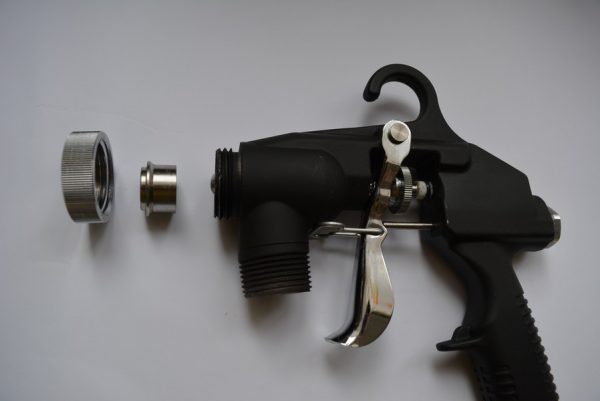
Material
Most often cartouche guns are made of aluminum or its alloys. Such materials are strong enough, but do not burden the design. The container for the solution can also be aluminum, but there are devices with nylon (plastic) containers for sale. The latter are even lighter in weight, while not less resistant to mechanical stress and chemically inert. For the production of nozzles used stainless steel, which is not susceptible to rust and microdamage.
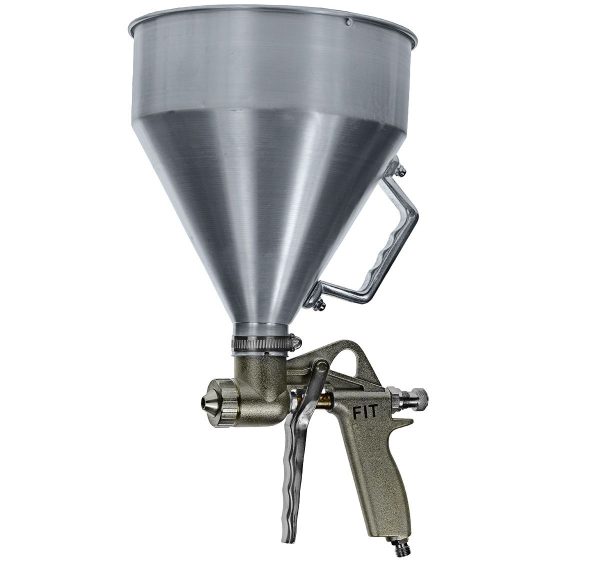
Dimensions and Weight
The lighter the device, the more convenient it is for the master to work with it. On average, the mass of the devices is 1-3 kg, the capacity of the tank is 3-5 liters. The length of the gun may be 15-25 cm or more. Professional models are capable of having capacities of up to 8 liters, but after refueling with a solution, it is quite difficult to hold them in your hands.
Nozzle sizes and their purpose
For plastering work, the nozzle must be correctly selected - its diameter must correspond to the filler fraction. For most manipulations, nozzles of 4, 6, 8 mm are suitable, which almost always come with a gun. Nozzles (tips) with a diameter of 2.5 and 3 mm are considered less popular.
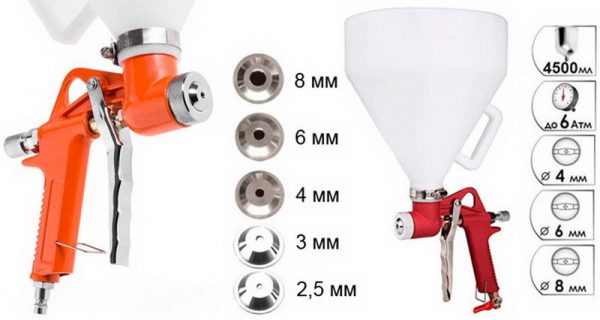
to contents ↑Nozzles also differ in cutting angle, which is selected depending on the density of the solution. The nozzle with a slice at an angle of 45 degrees is considered the most popular, which is well suited for standard cement, lime, gypsum plaster.
Necessary pressure and speed
In order for the gun to work with maximum performance, you need to select a suitable compressor for it. Some models produce a pressure of 3-4 bar with a productivity of 170-250 liters / minute, others create a pressure of 4-8 bar and consume up to 220-380 liters of plaster. Usually the minimum possible indicator is 1.5 bar, the maximum is 8 bar. The average unit supports a working pressure of 4 bar, which is enough for plastering.
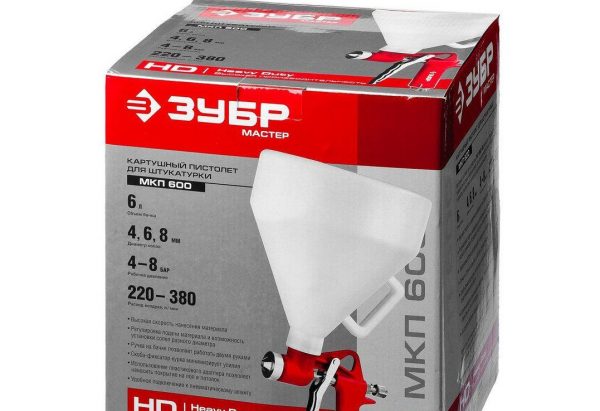
Types of cartouche guns and their price
The division of devices into groups is conditional. All of them have a similar design and the same principle of operation:
- Devices for decorative and decorative purposes. Designed for applying material with a thickness of up to 12 mm, more often used for finishing or decoration work. Many models have a bayonet mount - a metal disc with drilled holes of different diameters, which is installed instead of a standard nozzle.
- Pistols for starting plastering. They are used for tougher work when it is necessary to apply plaster. Can perform thick layers of material.
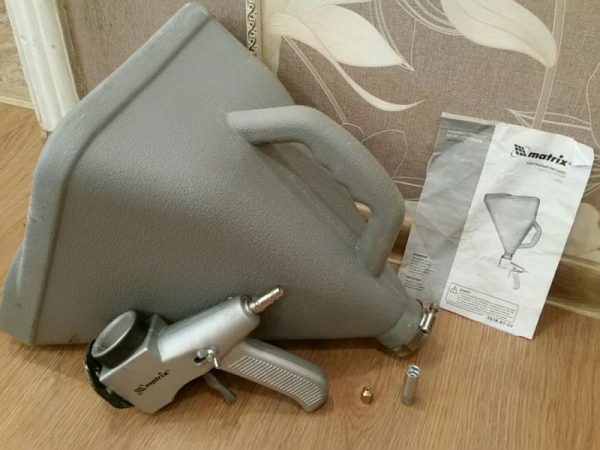
Cartridge guns can be divided into domestic and professional. The first have a small container (up to 4 liters) and operate with a pressure of 3-4 bar. Sometimes the quality of their assembly leaves much to be desired, and for daily use they are not suitable. The latter are suitable for professional finishers, given the active use. They boast a high-quality fit of parts and durable materials of manufacture, the kit contains a large set of different tips. The capacity size of such products exceeds 4 liters.
to contents ↑Which device to choose
When buying, you need to immediately determine how often and for what purpose the device will be used. Professionals are advised to choose a more reliable and expensive device, whose service life is much longer. The performance of a cartouche gun in liters / minute is also important: for domestic use, 170 liters are enough, but for craftsmen this indicator will be too small.
Be sure to pay attention to the absence of cracks, chips, defects on the case. Replaceable nozzles must be easily screwed in by hand, the trigger in good devices is pressed smoothly, without play. If the gun is equipped with an air valve, this will allow you to adjust the pressure, therefore, will improve the quality of work.
to contents ↑Instruction for use
For beginners, for a start, you should make a test application of the stucco mixture using a cartouche gun. This will evaluate its power, choose the optimal distance to the surface. Typically, gypsum plasters are applied, holding the gun almost against the wall, cement - about 20-25 cm from the base. The thickness of each layer should be kept within 10-12 mm, if necessary, use the unit in 2 runs. The second layer is performed only after drying of the first and its processing with a construction grater.
Since holding the device requires certain physical efforts, it is better to process 1.5-2 square meters of the wall in one go, no more. It is not necessary to completely fill the cartridge cartridge case - this will create inconvenience during operation. To comply with safety precautions, even before starting all actions you need to wear a respirator, a protective helmet. If you are applying compositions with stone chips, use protective helmets made of impact-resistant materials and special glasses.
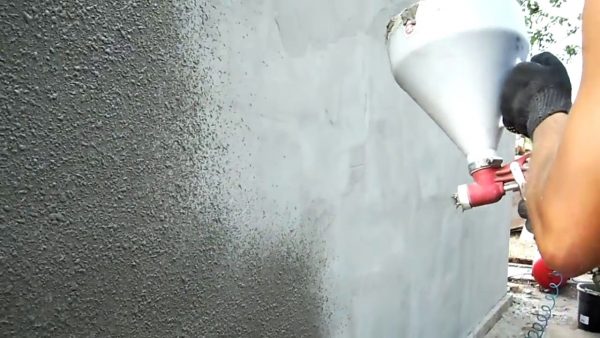
The procedure for working with a cartouche gun will be as follows:
- Foundation preparation. Be sure to clean the wall, remove dust from it, prime it and let it dry completely. If there are serious elevations, they perform the cutting of strongly protruding areas with further manual plastering with cement mixtures.
- Installation of beacons. To navigate the thickness of the applied layer, put special beacons. They will help to maintain the evenness of the plaster.
- Preparation of the solution. Dilute a solution of the desired density. They monitor its homogeneity and the absence of lumps, otherwise after drying the layer of plaster will crack. Kneading is done in small portions, and this rule is especially relevant for gypsum mixtures with low viability.
- Setting optimal compressor power.If the air pressure is weak, the plaster will fly apart or flow off the surface. Excessively high pressure causes the hose to tear and stop working.
- Nozzle installation. If there is no experience in work, put a nozzle for solutions of medium density. She will quickly acquire the necessary skills.
to contents ↑During operation, the gun is held at the level of the belt so that the jet is sprayed onto the wall at right angles. The device is led along the wall in a straight line, each subsequent row of the solution is applied with a slight approach to the first. After the completion of the first layer, they are passed along it as a rule in order to align well.
The density of the solution
By consistency, the plaster for the cartouche gun should resemble thick sour cream and flow freely along the walls of the container. Mixtures with marble or mica chips are usually denser due to the appropriate fillers. To create patterns, more fluid formulations are used. In general, cartouche guns can even be filled with glue and synthetic mixtures, making their density a little higher than indicated in the instructions.
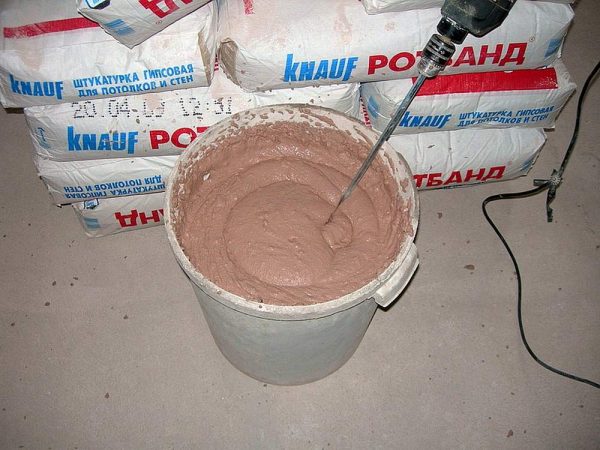
Cartridge Gun Manufacturers
The minimum price of the device is 1500 rubles, while a quality gun can be bought for 3000-4000 rubles. The most popular among professionals are Brigadier devices (Switzerland) with aluminum funnels that work for a long time and are characterized by high build quality. Also, users praise devices from Graco, Bosch, Fubag, Matrix, FIT, "Bison".
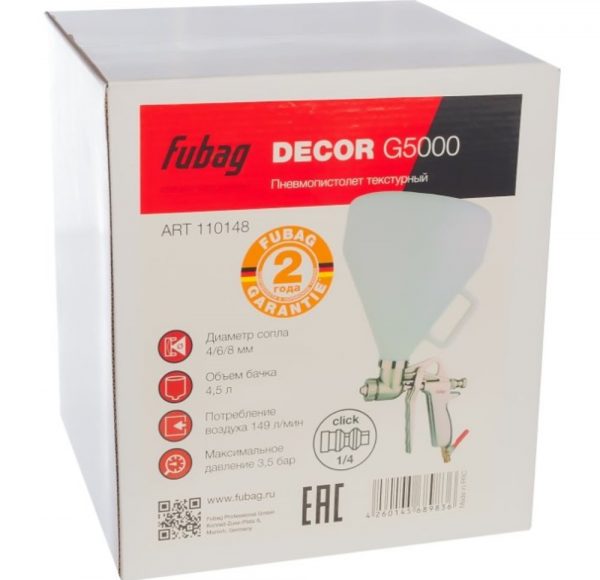
A cartouche gun is a necessary device in the arsenal of each finisher. It greatly facilitates the work, increases the evenness of the application of plaster and reduces time consumption. Inexpensive household pistols are useful even for home use, will allow you to repair quickly, efficiently and with your own hands.



